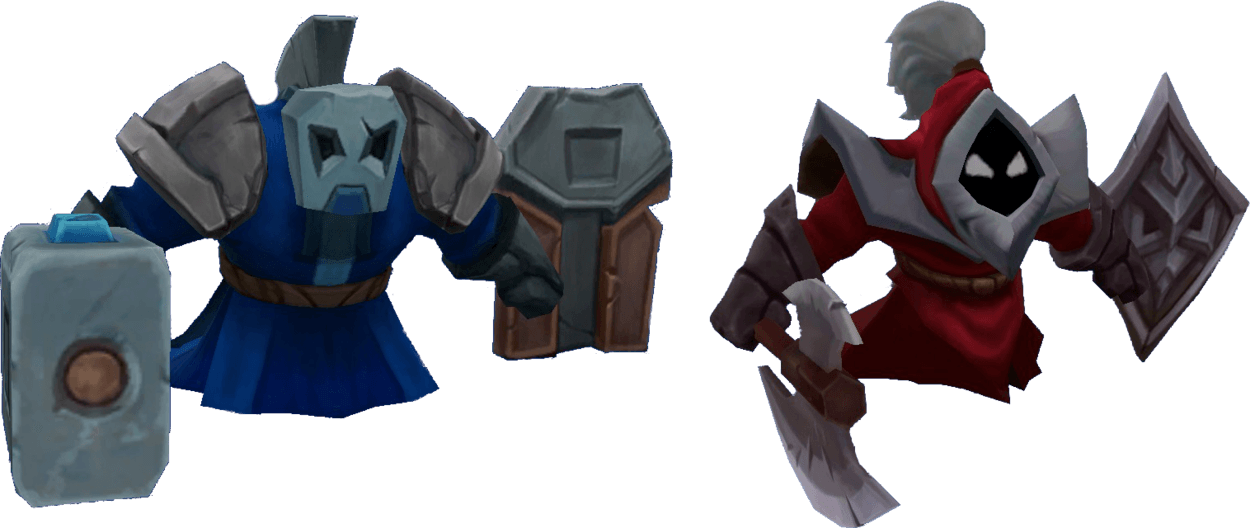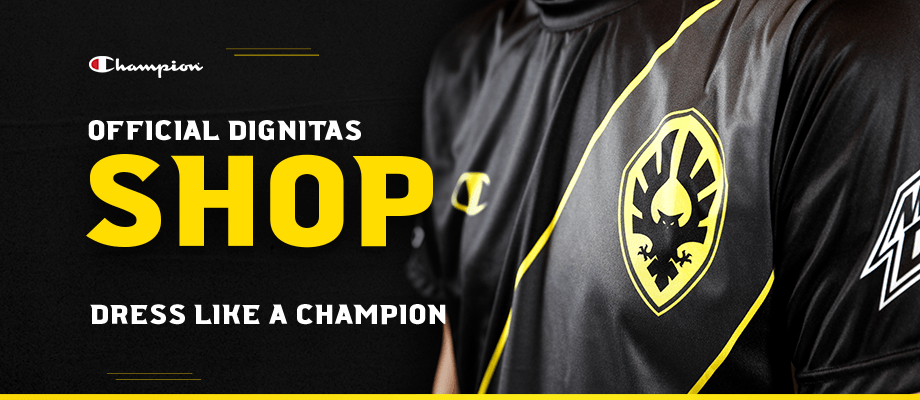A Guide to Improving Your Wave Management in League of Legends
A guide for improving your wave management techniques in League of Legends.
A guide for improving your wave management techniques in League of Legends.
Wave management is a crucial and very beneficial subject in the realm of League of Legends. It is a requirement in each lane and mastering it can lead to more success in your League games. Many people don’t understand wave management and that causes them to lose lane sometimes and miss out on important opportunities. In this guide, you will learn all the methods of wave management and how to manipulate your waves to your advantage.
This guide will be gauged towards people wanting to learn wave management from the bottom up and people who want to educate themselves further on the topic. Managing waves requires you to not make any mistakes, one mistake can mess up the wave, forcing you to restart your strategy. Wave management requires a lot of practice and can cause frustration. In League, you must practice a lot and avoid tilt to get better, and wave management is essential to being good at League of Legends.

Every game you will see the minions spawn at 1:05. Your Nexus will spawn minion waves every 30 seconds until the end of the game. The 30 second timers on each wave spawn is crucial to manipulating your wave.
The waves have a set amount of melee minions and caster minions, each wave will contain 3 melee minions in the front and 3 caster minions in the back of the wave. Every third wave will have a siege minion that has more health, more attack damage and is worth extra gold.
Prior to 15 minutes one siege minion will spawn every 3 minion waves. The rate that siege minions spawn, increases at 15 minutes to one siege minion every 2 minion waves, capping out at one siege minion per wave at the 25-minute mark. Siege minions are crucial to building large waves capable of sieging towers on their own and waves that’ll help you kill towers extremely fast. Siege minions do not spawn in the lanes that have super minions.
Super minions are very tanky, high attack damage minions that spawn after you take down an enemy inhibitor. These minions only spawn in the lane in which you destroyed the inhibitor, and they stop spawning once the inhibitor regenerates. Super minions spawn with every wave while the inhibitor is down, they regenerate health making them able to take down towers without being accompanied by champions. They sometimes can beat squishy champions on their own, making them a big threat and important minions for sieging the Nexus.
Minions target enemies based on a priority system in the game’s code. This priority system is as follows:
To improve the time of your back for managing your wave, you should know when and where the minions will be at certain times. Keeping track of your minion wave and the enemy’s wave allows you to time your backs perfectly to where you don’t lose out on CS. The best thing to do before backing is to push the wave very quickly, so you don’t lose out on CS and the experience they give you.

Credit: Mobalytics
If you cannot finish you push quick enough, then you should look to freeze the wave. Freezing the wave means both waves will meet each other and kill each other in the same position, until the freeze is broken. This will stop the enemy wave from pushing and allow you to back safely and miss out on a little amount of cs. To freeze a wave you must leave 2 to 3 of the caster minions alive.
To set a freeze in your lane, you need to manipulate the enemy wave. You need to even out the waves and last hit minions to keep the freeze going. If you do not last hit, you will constantly need to correct your freeze and you may break your own freeze. If the enemy’s wave is pushing towards your tower, and approaching it, then you will need more ranged minions in lane. You will need more ranged minions as your minions will be coming to lane quicker.
When in lane, to freeze the enemy out while close to your tower, you might need to tank some minions to even out the waves and ensure an indefinite freeze. You will need to pull minions away from the tower by obtaining minion aggro and tanking some damage. Freezing is harder and risky in the early game as champions are incredibly weak.
To avoid tanking too much damage you will need to trim up waves. If the enemy wave has more minions than their wave will push into your tower. If you cannot tank those additional minions, then you will need to thin the wave, so you don’t lose too much health. You don’t want to give the enemy an opportunity to engage onto you and kill you, so don’t tank for long periods of time. Below is a very detailed video on how to freeze if you want more information.
Freezing is a great wave manipulation tactic that is very beneficial. You will use a freeze when you are constantly being ganked to avoid future ganks. Freezing on your side of the lane and by your tower will make it extremely hard for the enemy jungler to find an opportunity to gank you.
Let’s say you are in a bad matchup. You are down 30 cs in lane and are drifting far behind your opponent. Creating a freeze in your lane will cause the enemy to miss out on cs and allow you to catch up. Placing a freeze close to your tower will make you less susceptible to ganks, engages from the enemy and allow you to farm safely.
Freezing can be used for many things. Freezing close to your tower will protect you from ganks and will allow you to farm safely. This method also makes it to where you won’t be denied cs by the enemy laner, and it will make the enemy laner overextend in the lane to obtain their farm. Freezing is a great way to set up opportunities for your jungler to gank your lane and place you further ahead of the enemy or decrease their lead over you.
Freezing does allow the enemy laner to roam elsewhere, so make sure to ward the river and enemy bushes and make sure to inform your teammates of a missing laner. If you allow the enemy wave to get hit by the tower, then the wave will bounce back toward the enemy and make you lose farm.
To break a freeze, you must shove your wave into the enemy tower or have your jungler come help you break it. Breaking the freeze by yourself is the best way due to it requiring no assistance at all, and it allows your jungler to focus more on their duties.
Usually done in the later parts of the game, slow pushing is a method that creates large waves capable of destroying towers or getting them extremely low. These waves can push themselves and draw enemy attention. This method requires a good amount of time as they slowly gather and push towards the tower.
Compared to freezing your lane, slow pushing is very easy. You must keep a minion advantage in the lane by killing the caster minions and if it’s a wave with a siege minion, then kill them also. It is all about letting your wave slowly kill the other so your next wave can come to lane and form a larger wave. When left unattended by the enemy, these waves can be monstrous.
Depending on where the minion wave is, you may need a larger minion advantage. If the minion wave is hitting on your side on the lane, then you will need a lower minion advantage to achieve a slow push, maybe 2 to 3 minions max. If the minions are hitting on the enemy’s side of the lane, the minion advantage must be high, ranging from 4 to 5 minions.
Setting up a slow push in your lane will allow you to roam around the map to other lanes, as the pushing wave will push itself as it gets larger. Roaming is essential to ensuring your team’s early game lead. Also, don’t forget to keep track of your wave, If the enemy is pushing it back quickly, then you must return to lane.
Slow pushes are also great for pressuring objectives all over the map. Setting up a slow push in any lane will cause the enemy team to leave to clear the wave while you are pressuring objectives. If they do not clear the pushing wave, then you can return to it and continue pressuring the towers.
Slow pushing is best used in the middle and late game stages. Doing it in the early game can cause problems in lane and you could lose out on a lot of resources, so avoid doing it early.
Slow pushed waves can take down towers on their own and allow you to achieve things around the map. These large waves draw the attention of the enemy away from objectives, so you will have an advantage when contesting them for objectives. Slow pushes are great if you’re looking to do stuff elsewhere on the map.
To set up a fast push, you need to kill the first three minions as fast as possible using your auto attack and your abilities. If the wave contains a cannon minion, then you must kill them as fast as possible also. The larger your minion wave, the stronger and faster the fast push becomes. This wave manipulation technique is great when you want to accomplish something quickly.
Fast pushing is great to do when you would like to kill your laner when their hiding under the tower. Fast pushes are great for setting up a dive and achieving a quick kill. Minions attack based on their priority system, so if the enemy attacks you back, then the minions will attack them and do some damage to help out. The minions also help to tank tower shot damage while you set up your attack. This method works great against low wave clear champions.
When the enemy recalls back to base, you need to fast push the lane once their gone. Make sure you have time to push the wave, back, and return to lane in time for it to bounce back. If you try to push and aren’t quick enough, then the enemy wave will be pushing into you and your tower. If the wave is too large to clear in time, trim the wave so your minions can freeze it, or start a slow push.
Any time the enemy laner leaves you should fast push the wave and try to get some damage onto the tower. The choice is yours to start the fast push and then follow the laner where they roam, or to fast push and constantly attempt to get the tower. Make sure the enemy is not in lane before fast pushing.
Fast pushing also allows you to roam on your own throughout the map, as the wave will be pushing and will not bounce back or be messed up without them clearing it. Your jungler can’t be everywhere so try to help when needed.
These are the best and most important wave manipulation techniques to learn and master in League of Legends. Knowing how to manipulate and manage your waves is essential for improving and climbing in League of Legends. It is extremely hard to master these techniques and they require a lot of practice. I hope you find this article helpful.
Like our content? Support us by getting our merchandise in our shop
